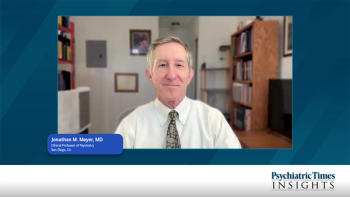
Recognizing and Differentiating Postpartum Depression
Experts discuss the importance of recognizing that perinatal mood and anxiety disorders (PMADs) can emerge before, during, or after pregnancy—often influenced by factors like pregnancy intention—and emphasize the need for comprehensive, nuanced diagnosis and holistic care that extends beyond postpartum depression to include anxiety, obsessive-compulsive disorder, posttraumatic stress syndrome, and other conditions, ensuring timely identification and support throughout the entire perinatal period.
Episodes in this series

Understanding when perinatal mood symptoms emerge is crucial for early identification and care. Mood disorders can appear at different stages—prior to, during, or after pregnancy. Notably, pregnancy intention plays a significant role in early emotional responses, particularly in unplanned or unwanted pregnancies. In the first trimester, individuals may struggle with acceptance, identity, or future planning, leading to early depressive or anxious symptoms. Despite the focus often being on the postpartum period, a substantial number of individuals begin to experience symptoms during pregnancy, with nearly equal proportions developing issues before, during, or after birth.
Using only the term “postpartum depression” may cause clinicians to overlook symptoms that emerge earlier. To address this, the umbrella term perinatal mood and anxiety disorders (PMADs) is now favored. This classification encompasses not only depression but also anxiety, obsessive-compulsive disorder (OCD), panic disorder, posttraumatic stress syndrome (PTSD), and psychosis. The diagnostic process focuses on identifying dominant symptoms—whether those are intrusive thoughts (suggesting OCD), hypervigilance and avoidance (suggesting PTSD), panic attacks, or symptoms of psychosis such as hallucinations. Many individuals experience overlapping symptoms, which requires a nuanced and individualized diagnostic approach.
Importantly, anxiety disorders are extremely common in the perinatal period—often more prevalent than depression. This overlap can complicate diagnosis, as many individuals meet criteria for both depression and anxiety. Recognizing the full range of perinatal mental health presentations is vital for providing appropriate care. Clinicians must stay attuned to function, symptom duration, and emotional responses, even if these don’t fit neatly into diagnostic categories. Holistic and empathetic care models that focus on both emotional and physical wellbeing, while integrating mental health screening throughout the perinatal timeline—not just after birth—are essential for improving outcomes for both the birthing individual and their child.
Newsletter
Receive trusted psychiatric news, expert analysis, and clinical insights — subscribe today to support your practice and your patients.


